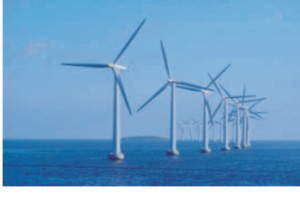
LEED® Category #3: Energy & Atmosphere
Energy efficiency is the cornerstone of the LEED® sustainable building program. Energy scarcity and the effects of energy consumption on the atmosphere are some of the most important issues we face as we move into the future. These issues affect our economy, politics, and the quality of our lives and it is vital that every effort is made to use finite energy sources responsibly.
Energy Uses and Opportunities
Commercial buildings consume approximately one-fifth of the total energy used in the U.S. Many of these buildings were constructed at a time when energy efficiency was not a concern or when the technology and design methods that provide energy efficiency were not available.
Two primary energy-using systems with savings opportunities in commercial buildings are the heating, ventilation, and air conditioning (HVAC) system and lighting system. It is not difficult or cost prohibitive to efficiently implement an HVAC system that uses 30-50% less energy than a system that just meets energy code requirements. The use of efficient lighting technologies, task lighting, and automatic controls coupled with daylighting can provide significant savings in addition to providing a better indoor environment for occupants.
Other building features such as the envelope, outdoor lighting systems, and building orientation provide additional opportunities for reducing building energy consumption.
There is no better time than during the initial design and construction process to implement energy efficiency. Indeed, as energy efficiency consultants, we have heard from many new-building owners who are alarmed at how much energy their new building uses. The number and impact of feasible options at this point is likely 90% lower than if they had contacted us prior to and during the design phase.
Protecting the Atmosphere
Reducing building energy consumption helps protect the atmosphere by reducing emissions from fossil fuel burning power plants or directly by reducing on-site fossil fuel consumption. Avoiding ozone-depleting compounds in building cooling systems is an additional focus of LEED® that allows buildings to have a lower impact on the earth’s atmosphere.
Renewables & Green Power
The LEED® sustainable building program also promotes the use of renewable energy sources through on-site generation or through the purchase of green power. On-site renewable opportunities include wind and solar energy recovery. Green power, typically produced by wind turbines in the Midwest, can be purchased from utilities. Purchasing green power raises demand for it and will reduce costs over the long term as economies of scale are realized and more suppliers enter the market.
Planning for the Future
Improving the overall energy efficiency and atmospheric impacts of buildings is an important step in conserving resources and reducing the impact that we have on the environment. An efficient building does not need to cost more than a traditional building and it will provide the owner with energy cost savings throughout the life of the building. Synergies with other LEED® categories such as daylighting also contribute to the health and productivity of building occupants.




